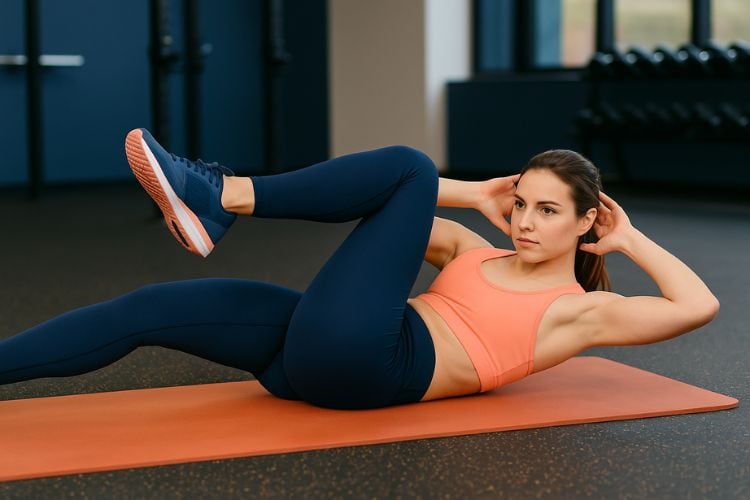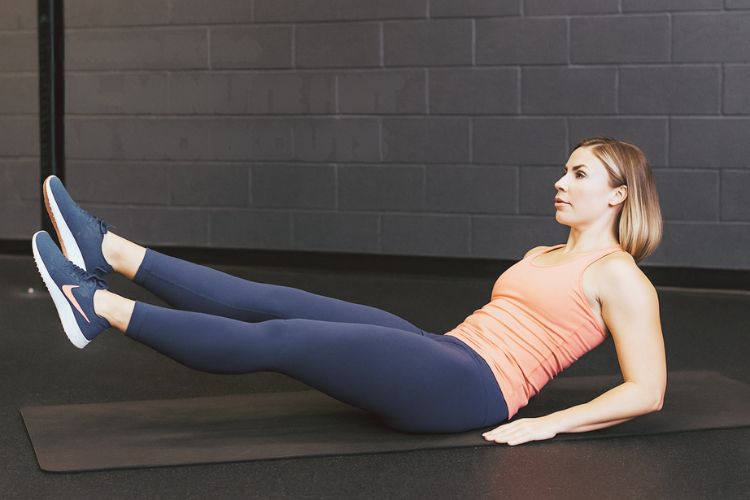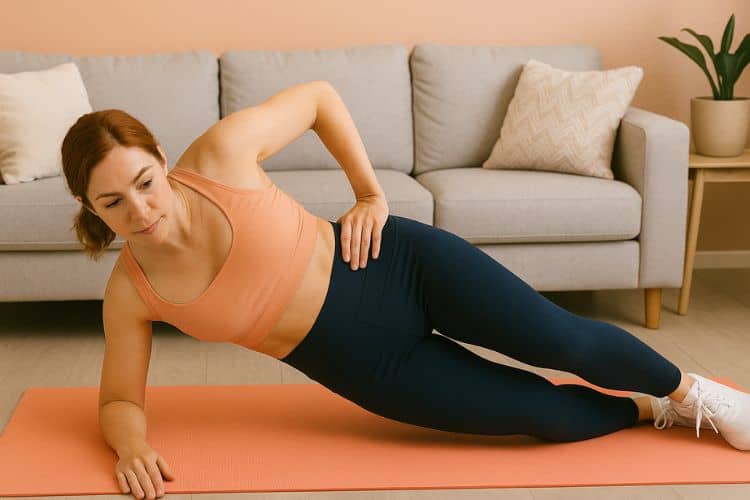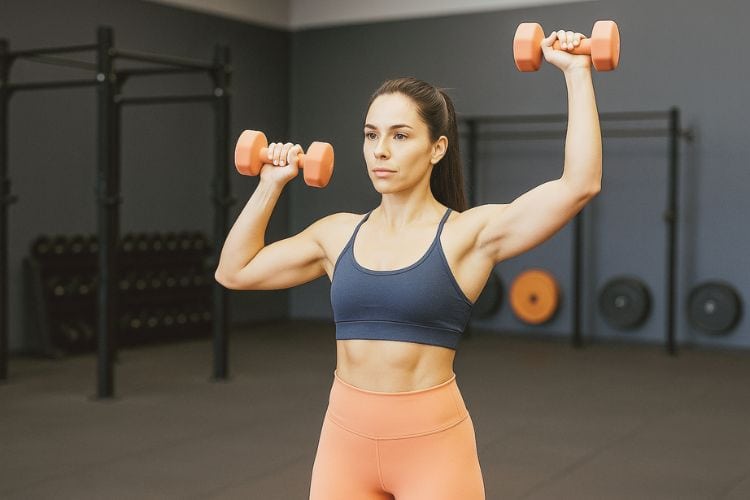Sign up for workout ideas, training advice, reviews of the latest gear and more.





When time is short, but you still want a powerful workout that tones your arms, boosts your heart rate, and burns fat, a 10-minute HIIT dumbbell arm workout is the perfect solution. This quick yet intense training style maximizes calorie burn while sculpting your biceps, triceps, shoulders, and forearms—all in just ten minutes. Whether you’re working out at home or in the gym, this guide covers everything you need to know, from the best HIIT structure to specific dumbbell exercises that deliver fast results.
High-Intensity Interval Training (HIIT) alternates between short bursts of intense effort and brief rest periods. When combined with dumbbells, it becomes a hybrid workout that improves both muscular endurance and cardiovascular health. You build lean muscle while simultaneously burning calories—a winning combination for toning your arms and shedding body fat.
One of the biggest advantages of HIIT dumbbell workouts is the afterburn effect, also known as Excess Post-Exercise Oxygen Consumption (EPOC). After a 10-minute session, your body continues burning calories for hours as it restores oxygen levels and repairs muscle tissue.
You don’t need an hour to see results. A focused 10-minute dumbbell HIIT routine can deliver serious progress when done consistently. All you need is a pair of dumbbells and a small space—perfect for at-home training or a busy gym schedule.
To get the most from a short session, you need strategic intensity and movement selection. The key is pairing upper-body strength moves with short rest periods and compound patterns that keep your heart rate high.
You can also repeat the circuit twice for a 20-minute version on days when you have extra time.
Before diving into the workout, perform a quick warm-up to increase blood flow and prep your joints:
Each of the following exercises targets your arms while keeping your body moving in a HIIT rhythm. Use moderate dumbbells that challenge you but still allow good form for all reps.
Muscles Worked: Biceps, shoulders, triceps, and core
How to Do It:
Why It Works: This combination move hits multiple upper-body muscles and raises your heart rate for calorie burn.
Muscles Worked: Biceps (brachialis), forearms
How to Do It:
Tip: Keep your elbows tucked to your sides and maintain tension throughout.
Muscles Worked: Triceps and shoulders
How to Do It:
HIIT Tip: Move with control—avoid swinging the weight.
Muscles Worked: Shoulders (front and side deltoids)
How to Do It:
Why It Works: This combo engages all parts of your shoulder for balanced toning.
Muscles Worked: Biceps, triceps, shoulders, and core
How to Do It:
HIIT Boost: This compound movement works your arms and abs simultaneously, keeping your heart rate elevated.
Muscles Worked: Rear deltoids, traps, rhomboids, and triceps
How to Do It:
Pro Tip: Focus on squeezing your shoulder blades together at the top of the movement.
Muscles Worked: Shoulders, triceps, legs, and core
How to Do It:
Why It’s Great for HIIT: The full-body drive keeps intensity high while targeting the shoulders and arms.
Muscles Worked: Triceps and chest
How to Do It:
Variation: Perform on the floor if you don’t have a bench.
Muscles Worked: Biceps, shoulders, legs, and core
How to Do It:
HIIT Benefit: Holding a lunge activates your lower body while your arms work continuously.
Muscles Worked: Shoulders, triceps, core, and stabilizers
How to Do It:
Finisher Move: This exercise burns out your arms while firing up your core to end the workout strong.
Cooling down helps reduce muscle soreness and improve flexibility.
Try these quick stretches:
Dumbbell resistance promotes hypertrophy in your arms, giving you that toned, sculpted look—especially when paired with consistent HIIT sessions that reduce overall body fat.
Even short bursts of intense effort improve muscular endurance and power. Over time, your arms become stronger and more capable of handling heavier weights or longer sessions.
The metabolic demand of HIIT boosts calorie expenditure both during and after the workout. You’ll continue burning fat long after you’ve put the dumbbells down.
These movements mimic real-life pushing, pulling, and lifting actions, making everyday activities easier and improving posture and stability.
Pick dumbbells that challenge you for 40 seconds but still allow for good form. If you can breeze through the set, go heavier; if your form breaks early, lighten up.
Focus on control rather than speed. Fast, sloppy reps reduce effectiveness and increase injury risk. Keep your core tight and shoulders down throughout each move.
Short rest periods—around 20 seconds—keep your heart rate up for maximum fat burning and endurance building.
Write down your weights and reps each week. Gradually increase resistance or intensity to ensure consistent progress through progressive overload.
For best results, pair this arm-focused session with other workouts targeting your core, legs, and full body. Try alternating between upper-body HIIT and lower-body dumbbell circuits throughout the week.
| Day | Focus | Workout Duration |
|---|---|---|
| Monday | 10-Minute HIIT Dumbbell Arm Workout | 10 min |
| Tuesday | 20-Minute Full-Body Dumbbell HIIT | 20 min |
| Wednesday | Rest or Light Cardio | 15–30 min |
| Thursday | 10-Minute HIIT Dumbbell Arm + Core | 15 min |
| Friday | 30-Minute Lower Body Dumbbell Workout | 30 min |
| Saturday | Optional Full-Body HIIT | 20 min |
| Sunday | Rest and Recovery | – |
Jumping straight into high-intensity moves without preparation can strain your shoulders and elbows. Always warm up your joints and muscles first.
Swinging the weights uses inertia instead of muscle engagement. Slow down to focus on tension and control.
Exhale during exertion (lifting/pushing) and inhale during relaxation (lowering). Controlled breathing helps stabilize your core and maintain rhythm.
Avoid training the same muscle groups intensely every day. Allow at least 24–48 hours of recovery between upper-body HIIT sessions.
Protein supports muscle repair and growth. Include lean sources such as chicken, eggs, fish, tofu, and Greek yogurt in your post-workout meals.
Even short HIIT workouts can cause fluid loss. Drink water before, during, and after to support muscle performance and recovery.
Combine your HIIT routine with a balanced diet rich in whole grains, vegetables, and healthy fats. Proper nutrition enhances workout results and overall well-being.
A well-designed 10-minute dumbbell HIIT workout packs intensity, muscle engagement, and calorie burn into a short window. It’s not about the length—it’s about effort and consistency. When performed 3–5 times a week, this approach builds visible arm tone, boosts endurance, and keeps your metabolism elevated.
If you’ve been struggling to find time for workouts, the 10-minute HIIT dumbbell arm workout is your shortcut to strong, defined, and powerful arms. Consistency is the key—commit to just ten minutes, push yourself during every interval, and watch your results grow week by week.
Whether your goal is to tone your arms, burn fat, or simply feel stronger, this short, effective workout proves that fitness success doesn’t depend on hours in the gym—just focused effort and dedication.
Explore other Women’s Fit Club guides to complement your arm training:
Stay up to date on the latest women’s health, fitness and lifestyle trends and tips.